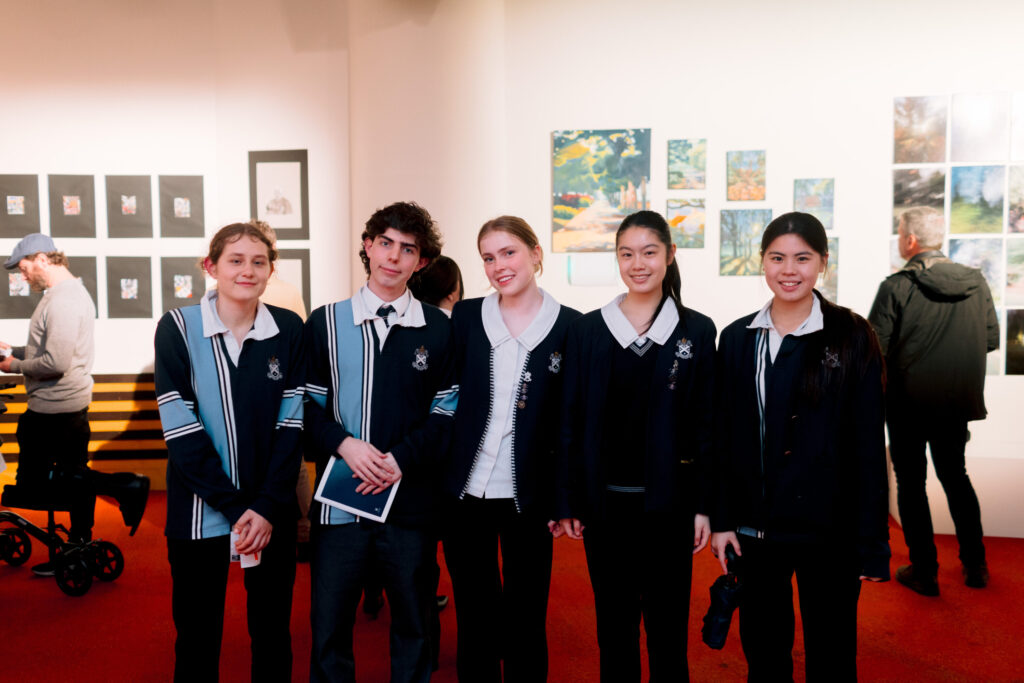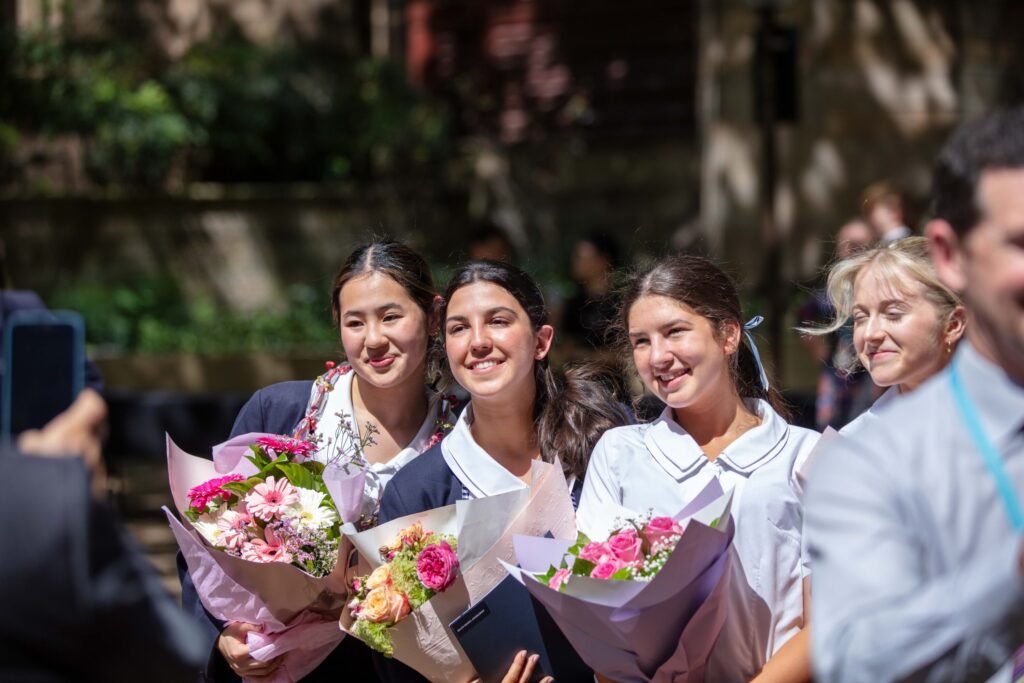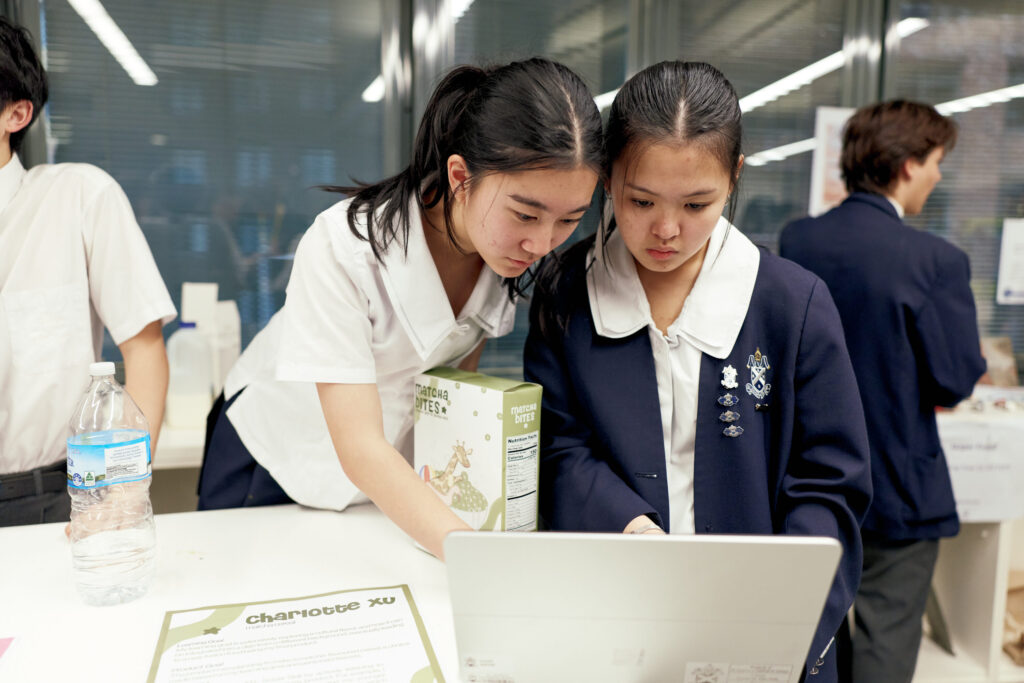Science is thriving at St Andrew’s Cathedral School, with students not only excelling in their classrooms but stepping confidently onto national and international stages.
In the space of just a few weeks, achievements across computing, physics, astronomy and biomedical research have shown how deeply curiosity and innovation are woven into the fabric of learning at our School.
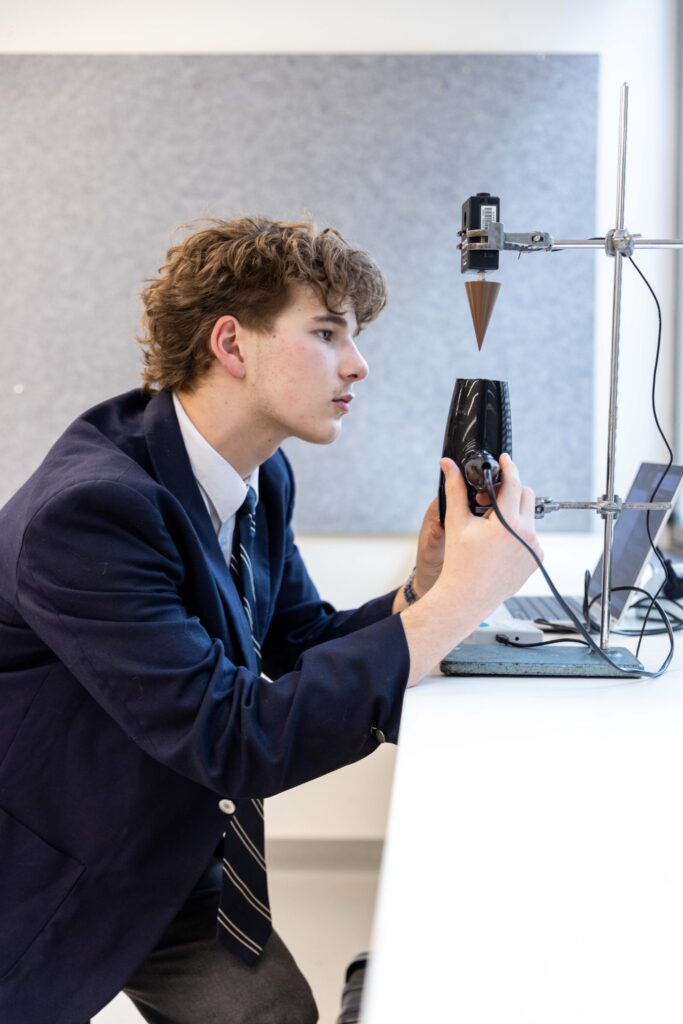
When the conversation turns to rocket science, it’s not often that a high school student is part of it. Yet Year 12 IB Physics student Owen Davies has done just that, recreating experiments originally performed by NASA in expensive wind tunnel facilities, with little more than a hair dryer, a force sensor and some 3D-printed nose cones.
NASA and SpaceX have invested heavily in optimising rocket nose cone designs. The problem is simple in theory but complex in practice: too pointed, and the rocket becomes unstable; too blunt, and drag forces waste fuel. NASA’s wind tunnel tests produced a mathematical model of how drag changes with cone angle, which Owen set out to test in a school setting.
He built his own scaled-down “wind tunnel” and tested a series of cones he had printed at different tip angles. Each was attached to a force sensor, with air blown directly onto it by the hair dryer. Astonishingly, Owen’s results matched NASA’s findings almost exactly, despite the far lower speeds and cost of his set-up.
“It’s remarkable, that with a bit of initiative and 3D printing, we can mimic, in a school setting, the outcomes from experiments NASA have performed in multi-million dollar wind tunnel facilities,” said Dr Andrew McGonigle, Scientist in Residence, who previously contracted with NASA.
“To see a student produce results that align so closely with these outcomes shows just how far our students are stretching their scientific capabilities with real experimental ingenuity.”
For Owen, the project is both a validation of his method and a glimpse into the way science is about testing ideas with creativity, not just resources. His work also exemplifies what is happening across St Andrew’s Cathedral School science classrooms: students taking bold ideas and putting them into practice, producing results that stand up on the wider stage of scientific inquiry.
The same spirit of innovation is evident in computing, where Year 12 student Arabella Simpson is set to showcase her Raspberry Pi Bird project at the PyConAU Python Developer’s Conference in Melbourne. Selected as one of only seven high school students across the nation, Arabella’s presentation will be streamed to developers and computing educators across Australia. While her work will be shared in a recorded video, Arabella will also join the conference live for questions.
“Arabella’s project is well above high school computing level,” said Deputy Head of Technological and Applied Studies, Mrs Amanda Hogan.
“I am very proud.”
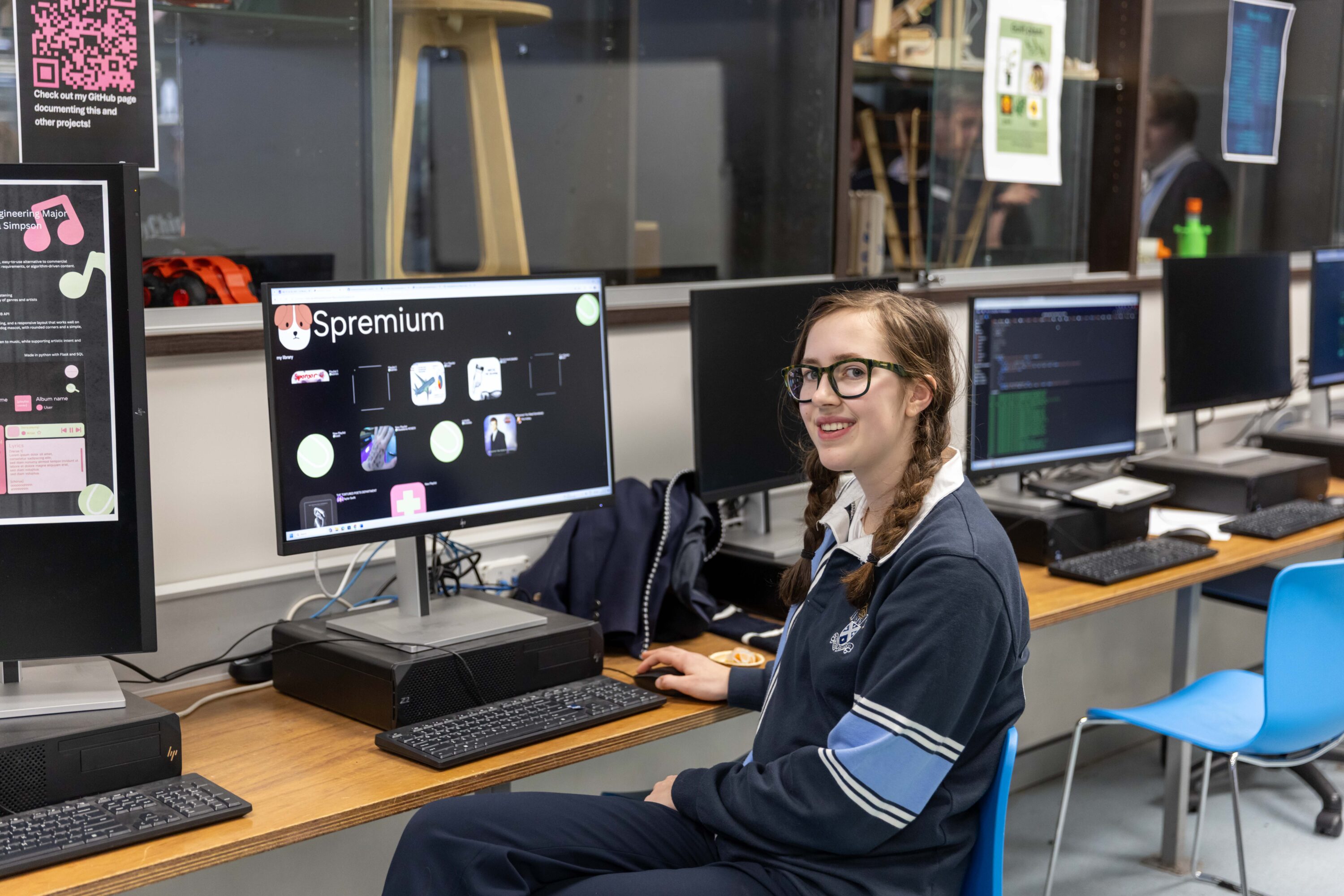
For fellow Year 12 student Amelia Woodyatt, science has been a pathway from the classroom to a university conference stage. She was invited to present her HSC Science Extension research at the [EX]plore Science Extension Conference at Macquarie University, marking the first time a St Andrew’s Cathedral School student has reached this level. Amelia’s research explored the link between diagnosed Metabolic Syndrome and post-operative pulmonary complications in surgical patients, a question that demanded both rigorous scholarship and sophisticated statistical analysis. Her presentation was awarded third place for best use of statistics, recognition that underlined the calibre of her work.
The conference also proved inspirational for the Year 11 students considering taking Science Extension in 2026, who attended to observe. They listened to talks, examined research posters and engaged with scientists working at the forefront of their fields. One student reflected that the day had “broadened my perspective on what science can be,” while another noted that it “gave me ideas for future research projects.” Such experiences show how individual achievement feeds back into the school community, sparking new ambitions and widening horizons.
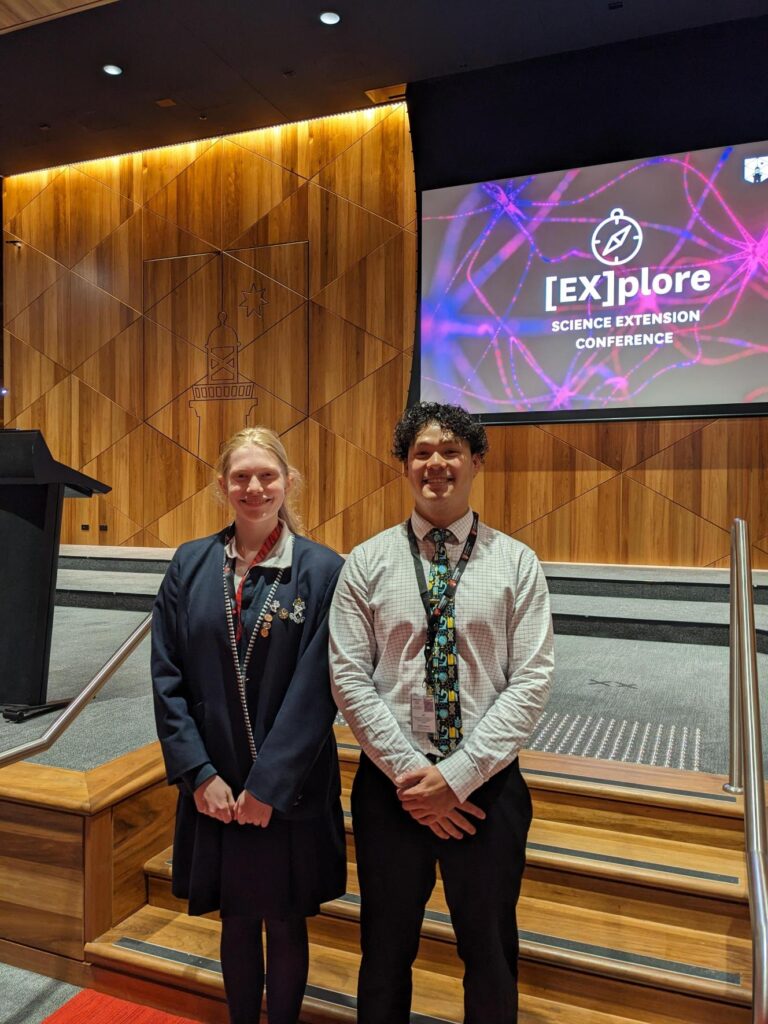
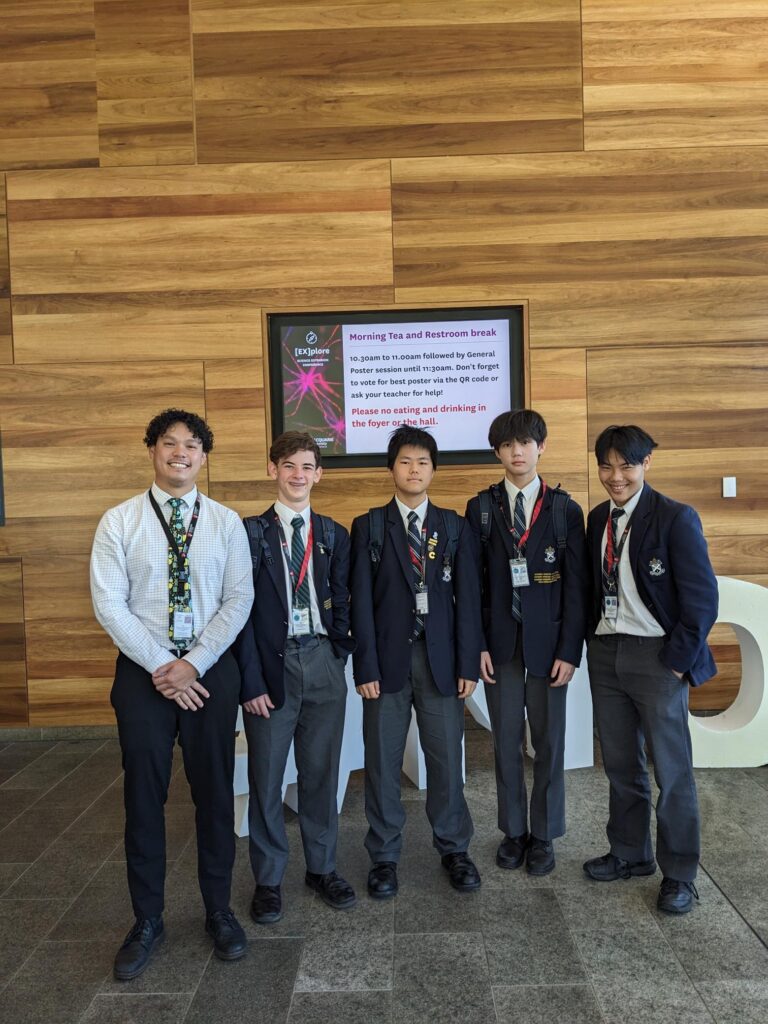
Achievement has also come on the global stage. Year 11 students Oliver Patrick, Yuze Ding and Martin Norman have progressed to the final round of the International Astronomy and Astrophysics Competition (IAAC), a demanding contest that challenges students to engage with real research and advanced astrophysical reasoning. Reaching the final means their work now sits alongside some of the top young scientific minds worldwide, a feat that speaks to both their persistence and their passion for science.
Taken together, these stories suggest more than just a string of successes. They reveal a culture where students are trusted to ask complex questions, to engage with material well beyond the curriculum and to test themselves against the standards of professional scientists. In physics, biology, computing and astronomy, their work is being recognised for its depth and originality – and in the process, they are redefining what it means to be a high school scientist.
As these students look ahead to life beyond school, their achievements stand as an inspiration to the younger years following behind them. Science at St Andrew’s Cathedral School is not only preparing students for exams but cultivating the kind of curiosity and resilience that drives discovery. In that sense, each accolade is more than an award, it is a sign of the bright futures our students are building and the impact they are already beginning to make.

